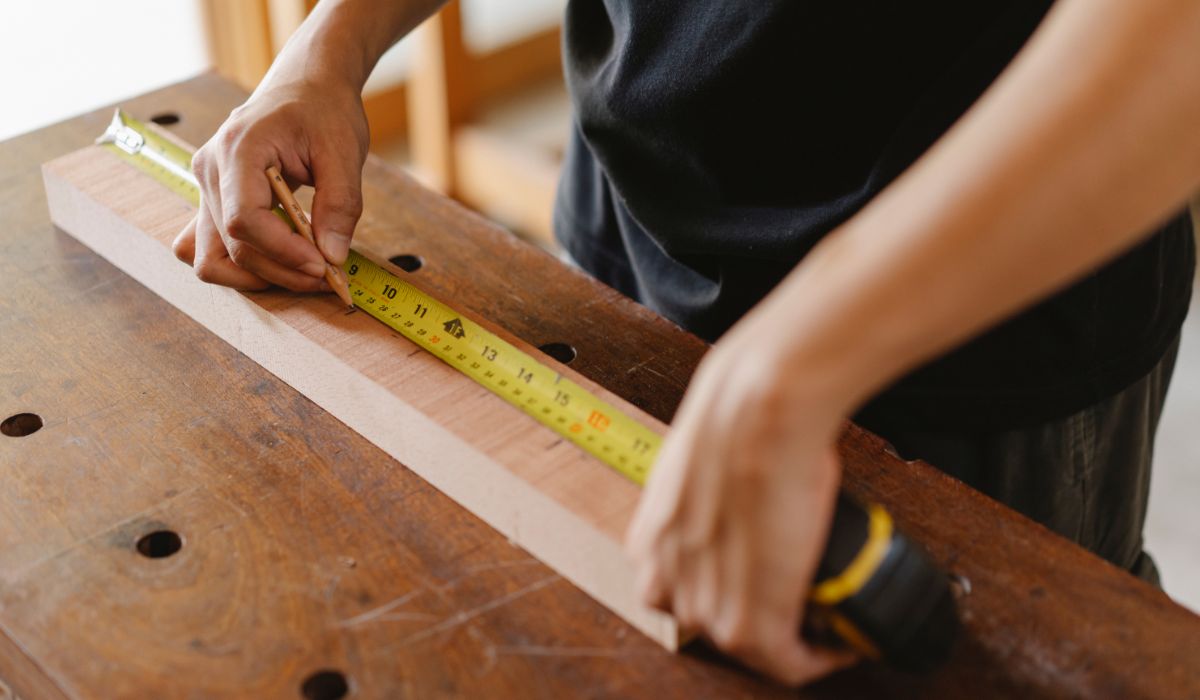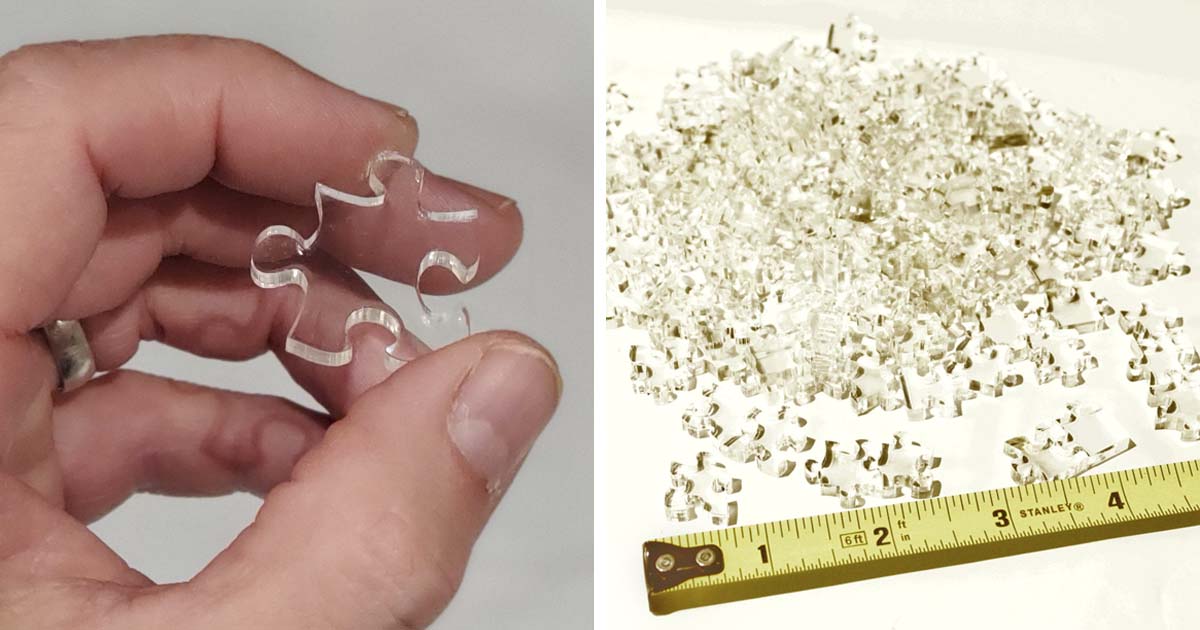Whenever an object is described through measurements, the sequence is always length, width then height.
Confusingly, many companies assume that their customers are aware of this sequence and fail to label the numbers to save space on the webpage or pamphlet.

This is why many furniture listings fail to add this critical information. If you see measurements labeled as ”1 x 2 x 3”, know that it means “Length x Width x Height.”
Defining Each Measurement
Although the sequence of “Length x Width x Height” might seem clear, to many people these words in themselves add a new layer of confusion.
For example, how do you know the difference between the length and the width of something, when they are really a matter of perspective?
Define Length
The length of an object is the longest part of that object. It doesn’t matter which direction the object is laying in front of you, as the length will always be the longest part.
Think of a road, when you tell someone how long the distance is, you don’t measure from sidewalk to sidewalk – you measure the longest part. No matter which direction the road is going, you continue to measure the longest part.
Define Width
As opposed to length, you have the width. This is the shortest part of the object. In a 3D object (which most are) the width is sometimes called the depth.
This is an assumptive term as it presumes the shortest part of the object aligns with our perception of depth. However, if we are measuring a thick wardrobe, the depth of the object may be the largest part. This is why the term width is the most common.
Define Height
Height is where our current simple explanation gets tricky. Height is always the vertical measurement. If the object you are measuring has multiple ways to stand, you have to pick a height that makes sense for its design or description.
For example, if you are selling an optical illusion painting, which only works in one direction, use that direction to pinpoint the height. But, if the painting can be moved around, you should pick your favorite angle, and then write the height and put landscape or portrait in the description.
This added detail can help the reader understand what position the object should be in. Because the height is always vertical, you need to consider this figure first before noting the other two.
This is because the biggest number in your dimensions could be its height. If the height is the longest measurement that means the length has to be the second longest measurement. Height takes priority over length, while width comes in last place.
The Difference Between “Area” And “Perimeter”

If you are looking at room sizes or measurements of a location, you will likely see the terms “area” and “perimeter”. The area will produce the room size in square feet, while the perimeter will tell you the complete length of the location.
Explaining The Term “Area”
The area of a room calculates the size of a surface. In a two-dimensional item, the surface is flat, while in a three-dimensional item, it includes the surface of all “walls”. The term area doesn’t include the interior space of the object. That term is “volume”.
To calculate the area of a room or object, you need to know the length and the width. Remember that the length is the longest measurement, while the width is the shortest. If the area you wish to measure is 3D, for example, the area of a box, you take the area of each sides and add them up.
For example, a side of a box measures 10 cm by 5 cm and its area is 10 cm x 5 cm = 50 cm2. A box has six sides so the total surface are of the box is 50 cm2 x 6 = 300 cm2.
Explaining The Term “Perimeter”
The perimeter is the measurement of a border. If you don’t need to know the height of a room, for example, a garden, then there is no need to add that figure to your calculation. The formula for a perimeter should add up all of the sides in the shape. If the shape only has 4 sides, then you add all four.
For example, length + width + length + width or length multiplied by 4 if the shape is a square. If the area is an octagon, you could up all 8 sides. As they would be symmetrical, you’d multiply 8 by the length to get the total perimeter.
Unlike the area equation, the perimeter doesn’t become squared. Instead, it stays in the same unit of measurement. For example, 3 feet + 2 feet + 3 feet + 2 feet = 10 feet.
Explaining The Term “Volume”
The volume of an object includes the surface area and the interior space within the object. To calculate this figure you use the same formula as the surface area, but the final figure is in cubic centimeters instead of squared. This means our example of 5cm x 1cm x 3 cm = 15 cm2 becomes 5cm x 1cm x 3 cm = 15 cm3.
The volume of an object is normally used to help measure a body of water, such as a pond or a fish tank. You wouldn’t expect volume measurements for a room or furniture such as a couch.
The Difference Between Imperial And Metric Measurements
Generally speaking, there are two forms of measurement – Imperial and Metric. The imperial system was created by the British Empire in the 1800s. It compiled a mixture of Celtic, Anglo-Saxon, and Roman knowledge to create a whole new measurement system that could be understood by most nationalities of its time.
This universal understanding made it a quick success. The metric system was invented in the 1700s by a French mathematician called Nicolas de Condorcet. He wanted to create a system that was easy to understand and followed a linear pattern.
It was accepted, then rejected, and accepted and rejected by the scientific community multiple times. But in 1837 France finally adopted it as its official measuring system. But enough history for today. What is the real difference between the two?
Understanding Imperial Measurements
The most commonly known imperial measurements are; foot, inch, yard, and mile for length; ounce, pint, and gallon for volume; and ounce, pound, stone, and ton for weight. However, there are hundreds of different ways to measure within the imperial system. For example, a yard is 3 feet long, while a furlong is 220 yards.
Imperial measurements were designed to use commonly understood terms and turn them into measurements. Feet and hands were genuine tools to help build and create. Today only three countries continue to use Imperial measurements as their official standard.
They are the United States of America, Myanmar, and Liberia. However, some counties use both imperial and metric systems. The most notable are Britain and Canada.
Understanding Metric Measurements
The rest of the world uses metric measurements. These measurements are designed to be easy to multiply or subtract as the units are measured in 10s. For length, the metric system uses millimeters, centimeters, and meters. For volume, the metric system uses milliliters, centiliters, and liters.
While in weight this changes slightly to the gram and kilogram. Each of the measurements can easily be calculated within its own measuring type. For example, there are 10 millimeters in a centimeter and there are 100 centimeters in a meter. Each figure, no matter the metric measurement, is a division of 10.
Summary
Measurements can be extremely confusing, especially if you mix the metric and imperial systems together. However, all official measurements of objects will follow the same pattern – Length x Width x Height.
The “x” is used as a gap or placeholder and doesn’t mean you should multiply the figures. However, if you need to know the area or the volume of the object, the formula is right there.



